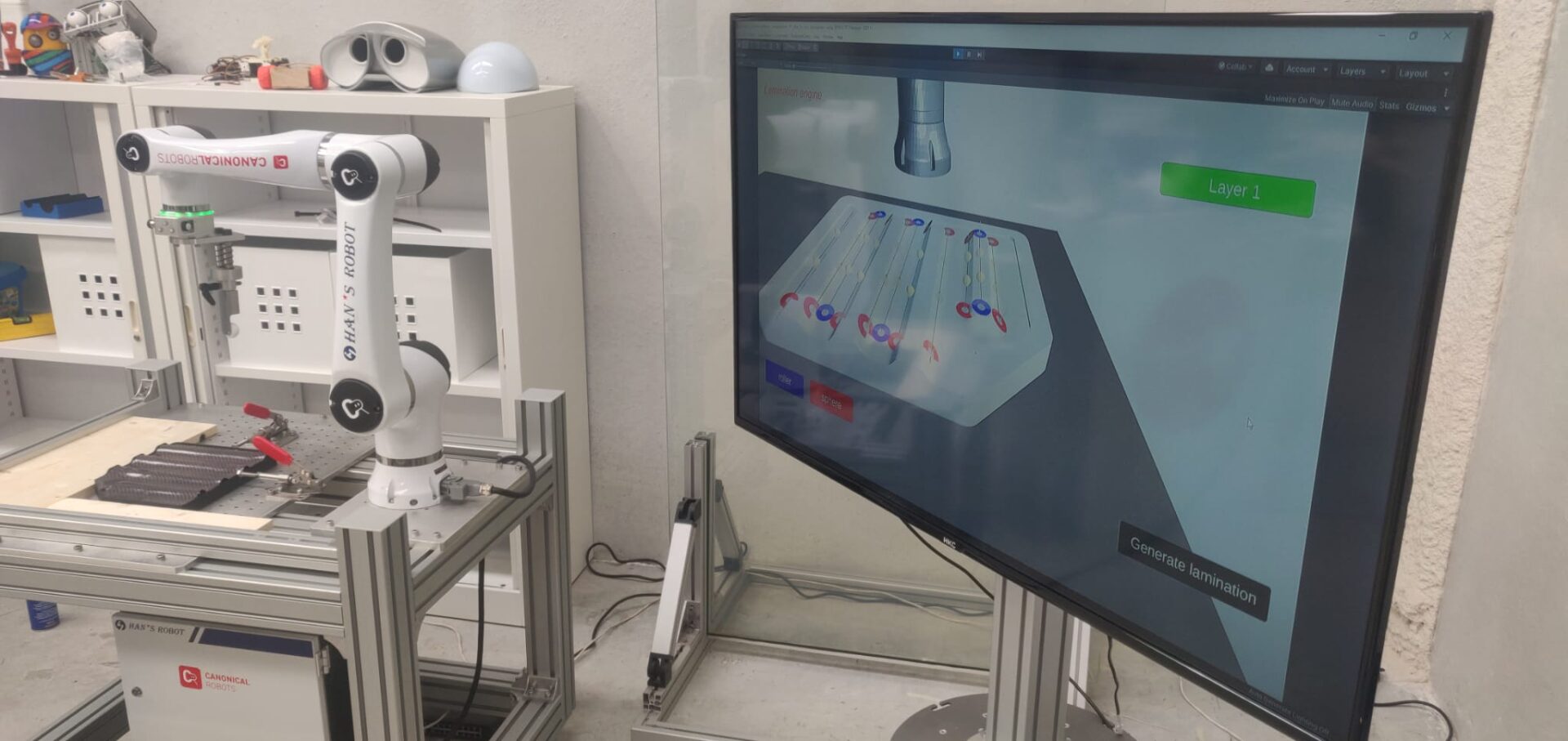
The main objective of CANNIER is to develop a flexible robotic cell for the automatic lamination of carbon fibre reinforcements that have been pre-impregnated (prepreg) with activated resin, making the process more agile and sustainable. To achieve these results, tailored robotic end-effectors and a CAM software for the computing of the lamination trajectories will be developed.
The solution proposed consists of two main technological developments, brought by the project partners: Small manufacturers of prepreg carbon-fibre-reinforced polymers (CFRP) parts, such as Composite Industries, have the strong need to improve the agility of their manufacturing process, increasing productivity, quality, and repeatability of products, and reducing manufacturing costs. Thanks to CANNIER, composite parts manufacturers like Composite Industries, will benefit from several improvements. The lamination process is more agile, leading to an automated environment that ensures improved quality and repeatability of the parts manufactured. Moreover, CANNIER brings significant economic and environmental benefits, such as: reduction of lamination time (-40%) and cost (-25%), and reduction of non-compliant parts (-10%).
1-Roboticssa developed a CAM software that automatically generates the robot trajectories, extracting all required parameters from the CAD of the parts to be manufactured and of the robotic tools. To maximise effectiveness, a user-friendly HMI allows operators to adjust lamination trajectories based on their experience.
2-Stam was in charge of the mechanical design of the robotic hardware, including: tools for the ply lamination, a solution to quickly change the tools, the cell frame and jigs for mould positioning. The lamination tools were specially designed to adapt to several mould geometries and apply constant pressure, ensuring consistent ply consolidation.
Challenge
The commonly used “hand lay-up” manufacturing technology, in which the final product is obtained by overlapping and laminating a specific number of different layers, represents the best economic moulding process for small batches of highly customisable components. The high flexibility required by this process is ensured by employing human operators, who are forced to perform repetitive and ergonomics-critical tasks.
The introduction of user-friendly and flexible robotic solutions represents the most suitable path to introduce automation in the CFRP components field for SMEs.
Impact
In the next few years, the growing interest in composite materials will ensure a strong market impact for the technology developers of CANNIER.
FSTP Name:
CANNIER
Beneficiary Lead:
RoboticsSolution Advisor S.L.
www.roboticssa.es/en/
Spain
Beneficiary 2:
STAM S.r.l.
www.stamtech.com/
Italy
Beneficiary 3:
Composite Industries SRL
Romania
Technology Area:
Robot Cell Development
End User:
Composite Industries SRL
Start Date - End Date:
01/11/2021 - 30/11/2022
Duration:
13 months
FSTP Funding:
199 938,00 €
TRL Level at Start:
4
TRL Level at End:
6
Number of early adopters raised:
1
SUBSCRIBE to newsletter
Please subscribe to our mailing list to be the first one informed about the new open calls, events and other hot news!
Your have successfully subscribed to Trinity newsletter.